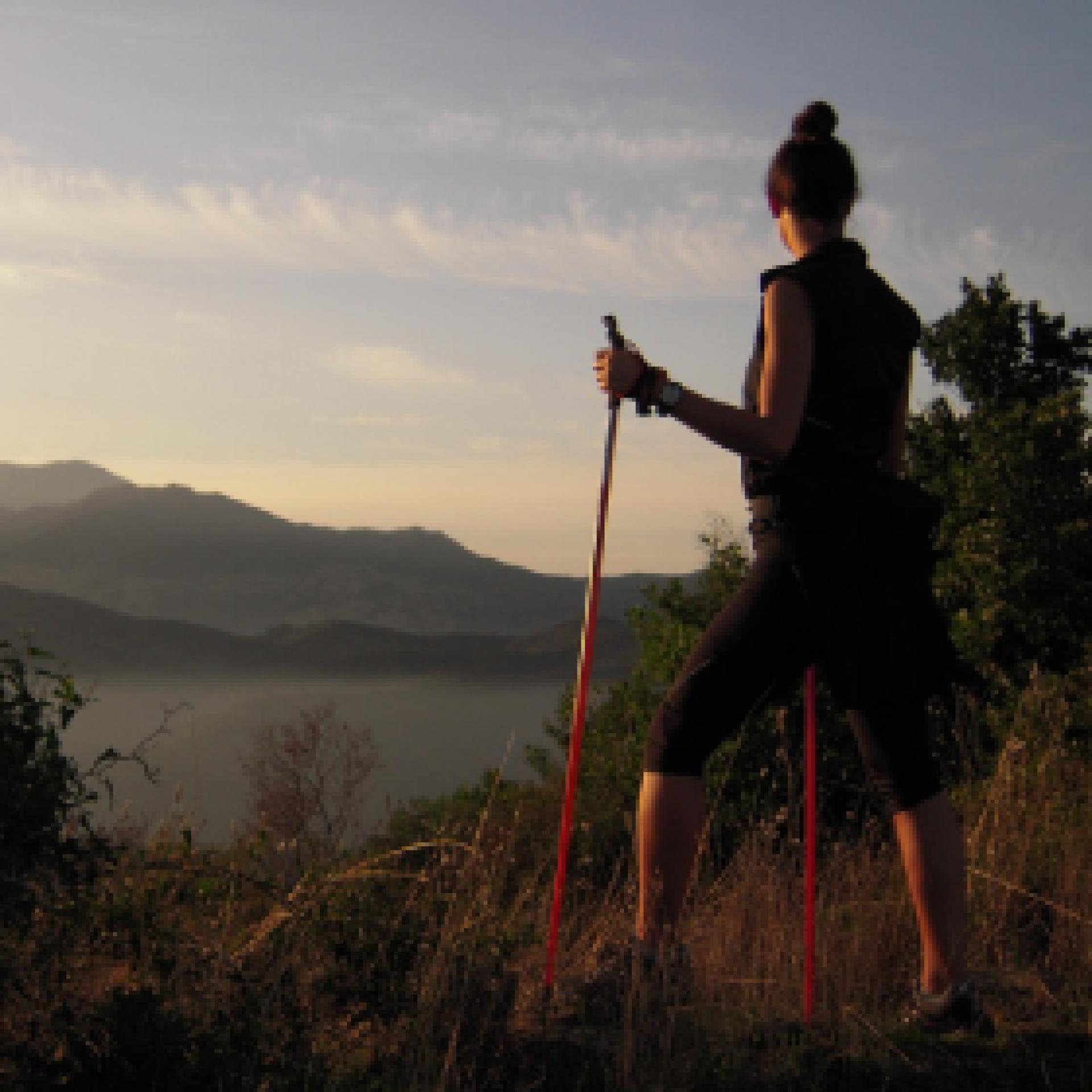Aritzo, Texile. The natural monument
Itinerary
Access
You commence the walk from the centre of Aritzo by taking Via Garibaldi, easily reached in the lower part of the village, then turning left once you reach the small panoramic square of Sant'Antonio, from which you can clearly distinguish the rocky taccu of Texile on the other side of the valley, the destination of the excursion. You continue down a narrow lane that leaves the last houses behind, immediumtely entering terraced allotments, dense hazelnut groves and tall walnut trees, splendid in autumn for their intense foliage.
The springs
The descent is interrupted at an opening near the Giaria spring. Here, the route continues initially slightly uphill and on a sometimes concreted road always in a beautiful wooded environment despite its proximity to the village. In addition, to the essences already observed, there are dense holly trees and splendid specimens of chestnut and alder. You come to a fork where you turn right, slightly downhill on a cobbled road, following the signs for the Funtana de Zia Albara. Another stretch through hazel groves and terraced allotments separates this junction from the beautiful spring. Take a right here, also meeting the signs for Texile. Gradually descend, first encountering a picnic area near which the monumental Addalcia pine, which unfortunately recently fell to the ground. At a ford, a last spring is finally encountered.
Texile
Once past the ford, the dirt road worsens slightly and begins to climb, making a wide hairpin bend but always remaining defined. Ignore minor detours occasionally encountering some signs for Texile and keeping to the south-west direction until one can clearly distinguish the limestone peak above, which is reached at the top of the ascent. The geological peculiarity of Texile is that, similar to many taccos in Ogliastra and the Barbagia di Belvì and Seulo, it is completely isolated from similar rocks and is an island completely unique to its surroundings, consisting as it does of limestone and resting on Palaeozoic schists. This has allowed a rare and peculiar flora to vegetate only on its walls, making Texile a treasure chest of biodiversity, which has therefore become an SCI area (Site of Community Importance) and strictly protected. For the more intrepid, a rocky gully allows access to the summit, from which an extraordinary view of Aritzo, Belvì, the Gennargentu peaks and the Uatzo valley can be admired. On the summit of the peak one can also find numerous ceramics from the proto-historic period, which testifies to ancient settlements or places of worship on the mountain. After a long panoramic rest, you finally return to the village by the same route as the outward journey.
- Log in to post comments

